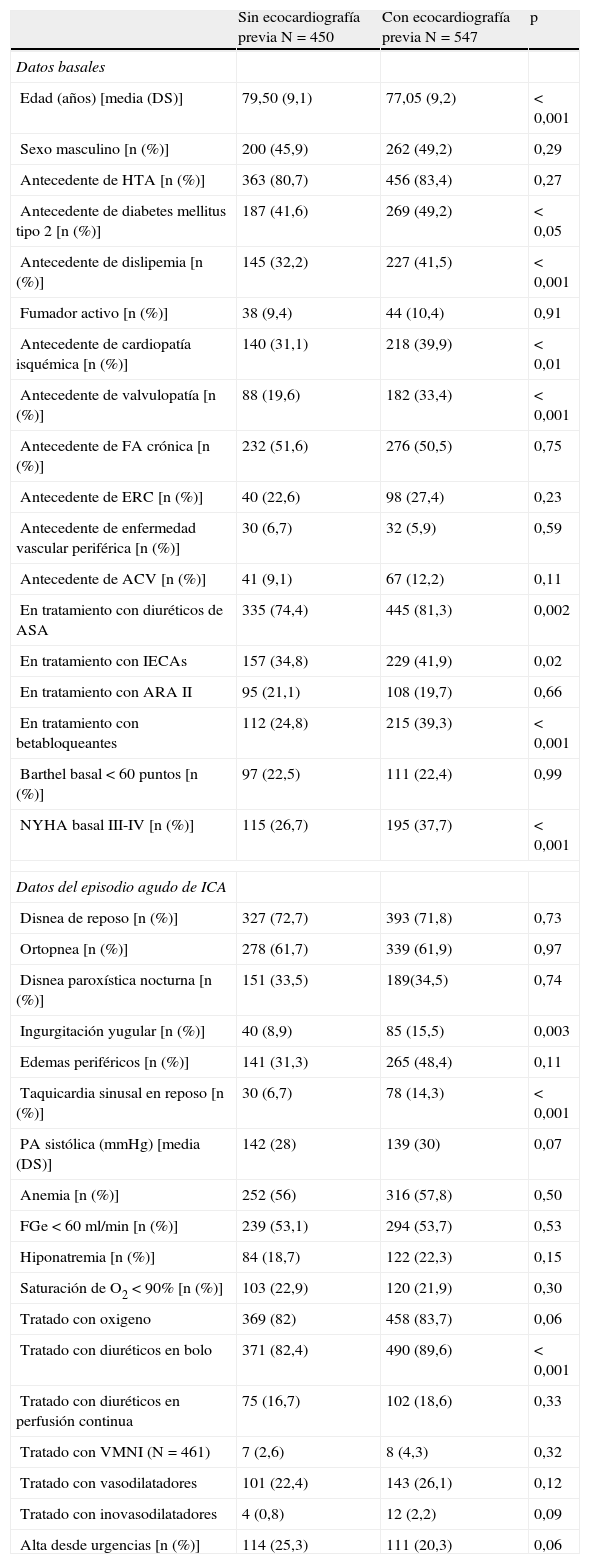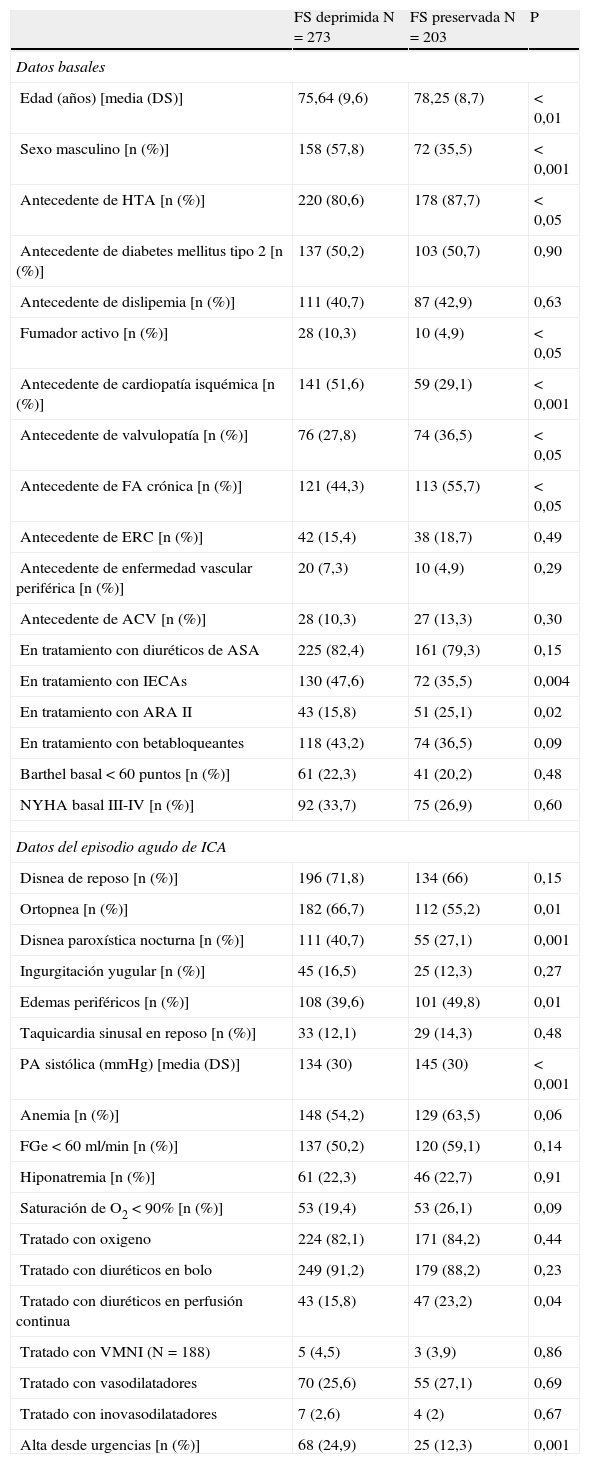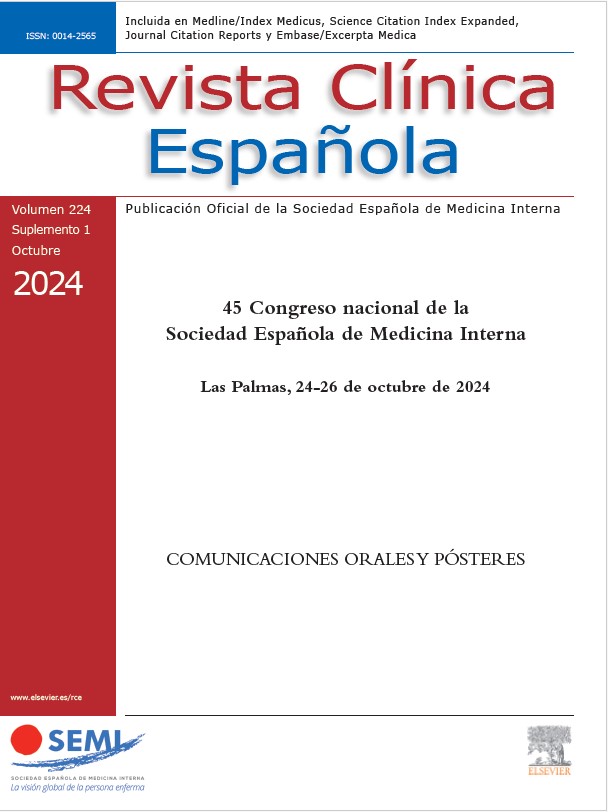Analizar el perfil clínico y la evolución a corto plazo de los pacientes atendidos en los servicios de urgencias hospitalarios españoles (SUH) por un episodio de insuficiencia cardiaca aguda (ICA) en función de si a estos pacientes se les había realizado o no una ecocardiografía, así como de la función ventricular estimada en dicha ecografía.
Pacientes y métodoParticiparon 9 hospitales que incluyeron consecutivamente a todos los pacientes diagnosticados de ICA durante dos meses. Se recogieron datos del perfil clínico y la evolución a corto plazo (mortalidad intrahospitalaria y mortalidad y revisita a los 30 días). Se investigó de forma retrospectiva la existencia de una ecocardiografía previa y, si existía, la cuantificación de la fracción de eyección del ventrículo izquierdo (FEVI), también se consideró la función ventricular deprimida o preservada según la FEVI fuese mayor o igual al 45 o menor al 45% respectivamente.
ResultadosSe incluyeron 997 pacientes, 547 pacientes (54,9%) disponían de una ecocardiografía y de ellos, en 476 se conocía el tipo de función ventricular: 273 (57,4%) la tenían deprimida y 203 (42,6%) la tenían preservada. Los pacientes sin ecocardiografía fueron mayores, con menos antecedentes patológicos, tenían formas menos avanzadas de cardiopatía, utilizaban menos los betabloqueantes y en urgencias se les trataba menos con diuréticos en bolo. Los pacientes con función sistólica deprimida fueron con mayor frecuencia varones, más jóvenes, fumadores activos, con cardiopatía isquémica y con signos de insuficiencia cardiaca izquierda (ortopnea y disnea paroxística nocturna); con menor frecuencia hipertensos, con cardiopatía valvular, con fibrilación auricular crónica y su presión arterial sistólica en urgencias fue menor, y fueron dados de alta directamente desde el SUH con mayor frecuencia. La mortalidad intrahospitalaria fue del 5,3%, la mortalidad a los 30 días del 8,9% y la reconsulta a los 30 días del 27,2%, pero no se encontraron diferencias significativas en ninguna de estas variables evolutivas en función de la existencia o no de ecocardiografía ni del tipo de disfunción encontrada en ésta.
ConclusionesLos pacientes que presentan un episodio de ICA no disponen de una ecocardiografía previa en un elevado número de casos. Este hecho obliga en estos casos a realizar un manejo terapéutico en el SUH guiado únicamente por los síntomas y signos como la presión arterial sistólica a su llegada a urgencias. A pesar de ello, el hecho de no conocer el estado funcional del ventrículo izquierdo no afecta a la mortalidad intrahospitalaria,a los 30 días y al reingreso.
Analyze the clinical profile and short-term evolution of the patients attended in the Spanish Hospital Emergency Services (SHES) due to an episode of acute heart failure (AHF) based on whether these patients had undergone or not an echocardiography and on the ventricular function estimated in said ultrasonography.
Patients and methodsA total of 9 hospitals participated. They consecutively enrolled all the patients diagnosed of AHF during 2 months. Data were collected on the clinical profile and the short-term evolution (intra-hospital mortality and mortality and re-visits at 30 days). The existence of a previous echocardiography was retrospectively investigated and, if it existed, the quantification of the left ventricular ejection fraction (LVEF) as well. The ventricular function was considered to be depressed or conserved according to whether the LVEF was greater or equal to 45% or less than 45%, respectively.
ResultsA total of 997 patients were enrolled. An echocardiography was available for 547 patients (54.9%). Of these, the type of ventricular function was known in 476: 273 (57.4%) had depressed function and 203 (42.6%) had conserved function. The patients who did not have an echocardiography were older, with fewer pathological backgrounds. They had less advanced forms of heart disease, used beta blockers less and, were treated less with bolus diuretics in the emergency service. The patients with depressed systolic function were more often males, younger, active smokers, with ischemic heart disease and had signs of left heart failure (orthopnea and paroxysmal nocturnal dyspnea). Less frequently, they were hypertense, with valvular heart disease, with chronic atrial fibrillation and their systolic blood pressure in the Emergency Service was lower. They were directly discharged from the SHES more frequently. Intra-hospital mortality was 5.3%, mortality at 30 days 8.9% and re-visit at 30 days 27.2%. However, no significant differences were found in any of these evolution variables based on the existence or not of an echocardiography or on the type of dysfunction found in it.
ConclusionsThe patients who had an episode of AHF did not have any previous echocardiography in a high number of cases. This fact made it necessary in these cases to carry out the therapeutic management in the SHES guided only by the signs and symptoms, such as systolic blood pressure on their arrival to the emergency service. In spite of this, the fact that the functional state of the left ventricular was not known did not affect the intra-hospital mortality, at 30-days and readmission.
Artículo
Diríjase desde aquí a la web de la >>>FESEMI<<< e inicie sesión mediante el formulario que se encuentra en la barra superior, pulsando sobre el candado.

Una vez autentificado, en la misma web de FESEMI, en el menú superior, elija la opción deseada.

>>>FESEMI<<<









